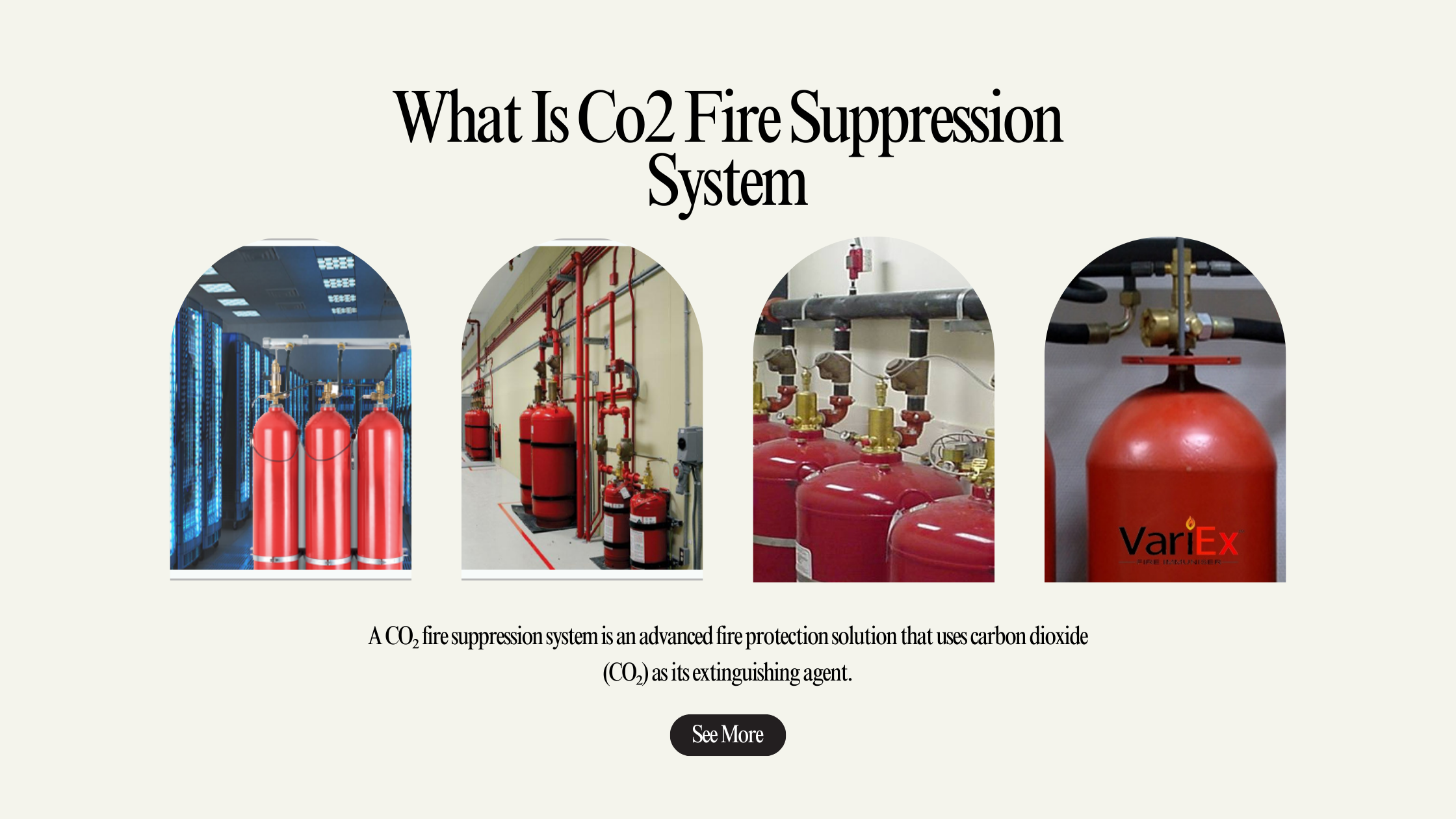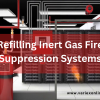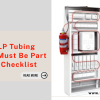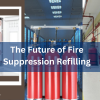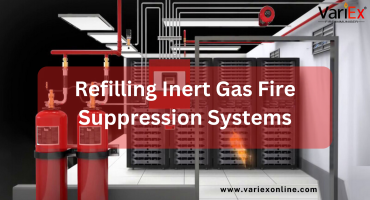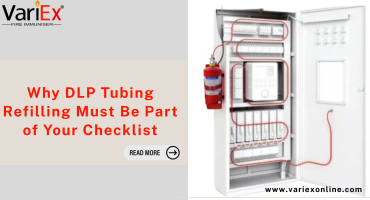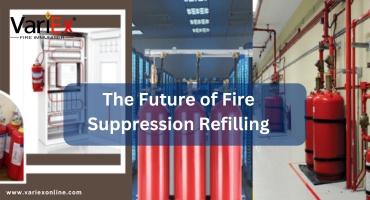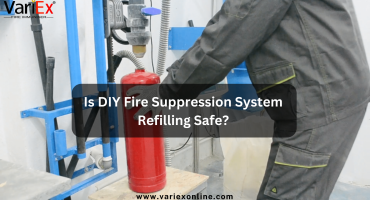![]()
Fire Immuniser
+91-7829629111
Email: info@variex.in
Varistor Technologies Pvt. Ltd.
Block-1, First Floor, Ardente Office One, Hoodi Circle, ITPL Main Road, Bengaluru, Karnataka 560048, IN
What Is Co2 Fire Suppression System
What Is Co2 Fire Suppression System
A CO₂ fire suppression system is an advanced fire protection solution that uses carbon dioxide (CO₂) as its extinguishing agent. These systems are highly effective in quickly suppressing fires by displacing oxygen and reducing the temperature in the fire area. CO₂ fire suppression systems are widely used in industrial, commercial, and specialized environments where water or other extinguishing agents might cause damage to sensitive equipment or processes.
This article delves into the functionality, components, advantages, limitations, and applications of CO₂ fire suppression systems, providing a comprehensive overview.
Table of Contents
- Introduction to CO₂ Fire Suppression Systems
- How CO₂ Fire Suppression Systems Work
- Components of a CO₂ Fire Suppression System
- Types of CO₂ Fire Suppression Systems
- Advantages of CO₂ Fire Suppression Systems
- Limitations of CO₂ Fire Suppression Systems
- Applications of CO₂ Fire Suppression Systems
- Safety Considerations for CO₂ Fire Suppression Systems
- CO₂ Fire Suppression vs. Other Fire Suppression Systems
- Regulatory Standards and Compliance
- Installation Requirements
- Maintenance and Testing Procedures
- Innovations in CO₂ Fire Suppression Technology
- FAQs About CO₂ Fire Suppression Systems
- Conclusion
How CO₂ Fire Suppression Systems Work
CO₂ fire suppression systems operate by releasing carbon dioxide gas into the fire zone. The system functions through a combination of:
- Oxygen Displacement: Reduces oxygen levels to below what is required for combustion.
- Cooling Effect: Absorbs heat to lower the temperature and suppress flames.
The process begins when the system detects fire indicators such as heat or smoke. Once activated, CO₂ is discharged rapidly, flooding the area and extinguishing the fire within seconds.
Components of a CO₂ Fire Suppression System
A typical CO₂ fire suppression system comprises the following components:
| Component | Function |
|---|---|
| CO₂ Storage Tanks | Store carbon dioxide under high pressure. |
| Discharge Nozzles | Release CO₂ evenly into the protected area. |
| Control Panel | Monitors fire detection devices and activates the system. |
| Fire Detectors | Detect heat, smoke, or flames to trigger activation. |
| Piping System | Distributes CO₂ from the storage tanks to the nozzles. |
| Manual Release Stations | Allow manual activation in emergencies. |
| Alarm Systems | Alert occupants before CO₂ discharge to ensure safety. |
Types of CO₂ Fire Suppression Systems
CO₂ fire suppression systems are classified into two primary types:
1. Total Flooding Systems
- Designed to protect entire enclosed areas by flooding the space with CO₂.
- Commonly used in data centers, electrical rooms, and server rooms.
2. Local Application Systems
- Target specific equipment or localized areas.
- Ideal for industrial machinery, flammable liquid storage, and small compartments.
Advantages of CO₂ Fire Suppression Systems
- Rapid Fire Suppression: Extinguishes fires within seconds of activation.
- Residue-Free: Leaves no residue, making it suitable for sensitive equipment.
- Non-Conductive: Safe for electrical and electronic environments.
- Versatile Applications: Effective for Class B and Class C fires, including flammable liquids and electrical equipment.
- Compact Design: Requires less storage space compared to water-based systems.
Limitations of CO₂ Fire Suppression Systems
- Life Safety Risk: Displacing oxygen can be hazardous to humans in the area.
- Cost: High initial installation and maintenance costs.
- Not Suitable for All Fires: Ineffective for Class A fires involving ordinary combustibles like wood or paper.
- Specialized Training: Requires trained personnel for operation and maintenance.
Applications of CO₂ Fire Suppression Systems
CO₂ fire suppression systems are used in various industries, including:
- Data Centers: Protect sensitive IT infrastructure without water damage.
- Power Plants: Prevent fires in electrical switchgear and generators.
- Marine Applications: Safeguard engine rooms and cargo spaces.
- Industrial Facilities: Protect equipment and areas handling flammable liquids and gases.
- Laboratories: Ensure safety in environments with specialized equipment and chemicals.
Safety Considerations for CO₂ Fire Suppression Systems
Due to the potential risks associated with oxygen displacement, safety measures are critical:
- Pre-Discharge Alarms: Alert occupants before the system activates.
- Proper Signage: Mark areas protected by CO₂ systems to warn personnel.
- Evacuation Procedures: Ensure all personnel evacuate before CO₂ discharge.
- Training: Provide regular training for employees on safety protocols.
CO₂ Fire Suppression vs. Other Fire Suppression Systems
| Feature | CO₂ Fire Suppression | Other Systems (Water, Foam, Gas) |
|---|---|---|
| Extinguishing Agent | Carbon dioxide (CO₂) | Water, foam, inert gases, or dry chemicals. |
| Residue | Residue-free | May leave residue (foam, dry chemicals). |
| Applications | Electrical, chemical, and sensitive areas. | General, industrial, or residential. |
| Human Safety | Can be hazardous in occupied spaces. | Varies based on agent (e.g., water is safe). |
| Cost | High installation cost | Varies by system type. |
Regulatory Standards and Compliance
CO₂ fire suppression systems must adhere to fire safety standards and regulations:
- NFPA 12: Standards for CO₂ extinguishing systems.
- OSHA Guidelines: Regulate safety procedures for CO₂ systems in the workplace.
- Local Fire Codes: Ensure compliance with regional requirements.
Installation Requirements
Proper installation of a CO₂ fire suppression system involves:
- Fire Risk Assessment: Evaluate the area and identify fire hazards.
- System Design: Tailor the system to the specific needs of the environment.
- Professional Installation: Engage certified technicians for setup.
- Testing: Conduct thorough testing to ensure functionality.
Maintenance and Testing Procedures
Regular maintenance ensures the reliability of CO₂ fire suppression systems:
- Monthly Inspections: Check components like storage tanks and alarms.
- Annual Testing: Perform discharge tests and inspect fire detection devices.
- System Updates: Upgrade to meet evolving safety standards.
Innovations in CO₂ Fire Suppression Technology
Recent advancements include:
- Smart Systems: IoT-enabled CO₂ systems for real-time monitoring.
- Eco-Friendly Alternatives: Reduced CO₂ usage through advanced distribution methods.
- Enhanced Safety Features: Improved pre-discharge alarms and automated shutdowns.
Conclusion
A CO₂ fire suppression system is a highly effective solution for protecting sensitive equipment and specialized environments from fire damage. Its rapid response, residue-free operation, and versatility make it a preferred choice in industries like IT, marine, and power generation.
However, understanding its limitations and ensuring strict adherence to safety protocols are critical for successful implementation. Regular maintenance, compliance with regulatory standards, and staying updated on technological advancements ensure that CO₂ fire suppression systems remain a reliable component of modern fire safety strategies.
Frequently Asked Questions
CO₂ can displace oxygen and pose risks to human safety. Pre-discharge alarms and evacuation protocols are essential.
CO₂ systems are effective for Class B (flammable liquids) and Class C (electrical) fires.
No, CO₂ is most effective in enclosed spaces where it can flood the area.
Monthly visual inspections and annual professional maintenance are recommended.
With proper maintenance, these systems can last 15–20 years or more.
Final Say
At VariEx.in and VariexOnline.com, we specialize in supplying and installing top-quality fire fighting systems and equipment. From fire extinguishers to advanced suppression systems, we offer comprehensive solutions tailored to your needs. Our experienced team ensures precise installation and maintenance for optimal safety.
Trust VariEx for reliable fire protection. Contact us online or call 7829629111 to learn more.
We specialize in manufacturing, supplying, and distributing a comprehensive range of fire fighting equipment, including state-of-the-art fire extinguishers. Read our most searched blogs and find interesting information on topics such as how to use a fire extinguisher, how to calculate fire fighting water tank capacity, fire extinguisher refilling, obtaining a Fire NOC, understanding fire fighting systems, types of fire protection systems, the fire hydrant system, and the fire sprinkler system. These resources provide essential knowledge for ensuring safety and compliance with fire safety regulations. Additionally, you can explore guides on the maintenance of fire protection equipment, the latest advancements in fire safety technology, and best practices for fire risk assessment and management.
Our expertise extends to fire alarm systems, fire hydrant systems, and fire suppression systems, including fire sprinklers. Each product meets rigorous international standards for reliability and performance, ensuring effective fire safety products tailored to diverse applications and industries. Additionally, we are providing Fire Extinguisher Refilling and AMC services to ensure ongoing maintenance and operational readiness of fire safety equipment.


